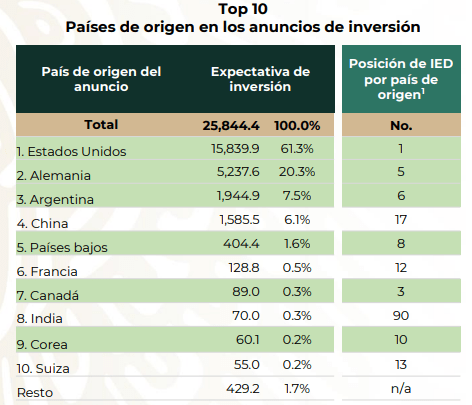The United States leads the ranking of the 10 main origins of Foreign Direct Investment (FDI) arrivals to Mexico that were announced in the first two months of 2024.
Based on those investment announcements, the expectation of FDI to the Mexican economy from the United States is 15.84 billion dollars.

This is followed by: Germany (5,238 million dollars), Argentina (1,945 million), China (1,586 million), Netherlands (404 million), France (129 million), Canada (89 million), India (70 million), South Korea (60 million) and Switzerland (55 million).
FDI
According to J.P. Morgan, the case of Mexico is particularly important for the United States given its geographic advantage; low labor costs; and the existence of a 30-year North American trade agreement.
Indeed, low costs and logistical advantages are the two pillars of nearshoring.
But the global geopolitical tensions of the last five years point to other important variables in the decision-making processes of companies and governments.
Moreover, according to the same source, particularly important are diversification, political certainty and cutting-edge technologies that do not necessarily coincide with the basic (early) motivation of nearshoring strategies.
In Latin America, Brazil has experienced an easing of political and inflationary risks along with interest rate cuts, while Mexico is benefiting from offshoring by U.S. companies.

